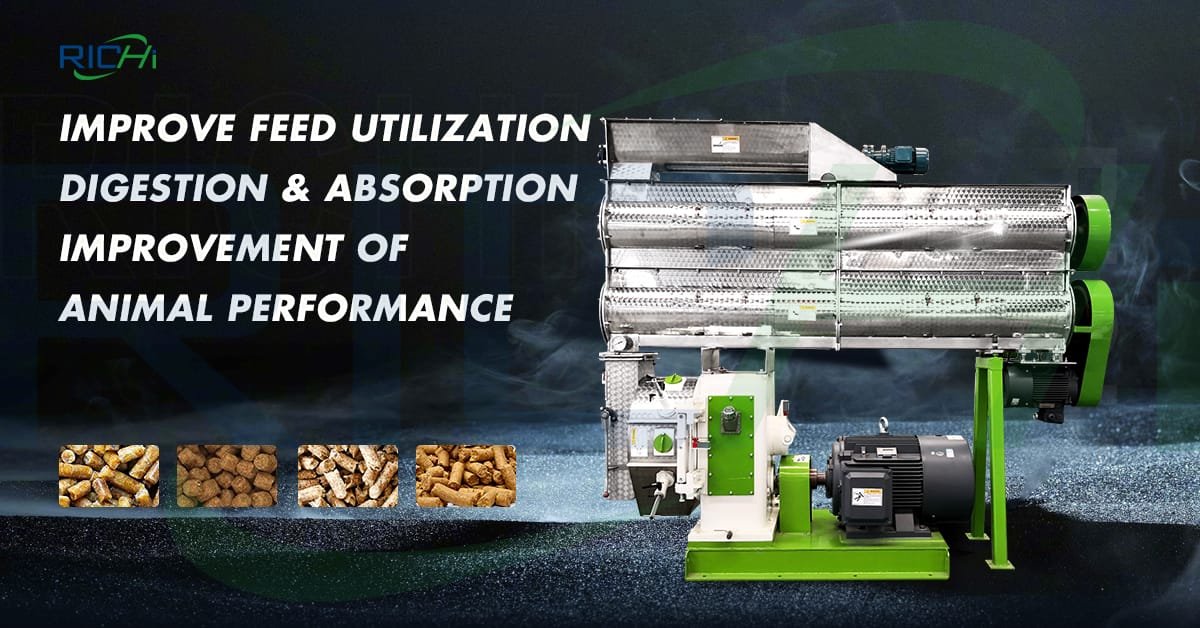The versatility of modern feed pellet making machines has led many farmers and feed manufacturers to question whether these machines, specifically those designed for goat feed, can also process forage pellets. This article explores the capabilities of goat feed pellet making machines in relation to forage pellet production, discussing the challenges, potential solutions, and considerations for those looking to expand their pellet production capabilities.
Understanding Goat Feed Pellet Making Machines
Goat feed pellet making machines are typically designed to process a variety of ingredients into compact, easily digestible pellets. These machines are known for their ability to handle diverse raw materials, including grains, protein sources, and various agricultural by-products. The key components of these machines include:
- Grinding mechanism
- Mixing unit
- Conditioning chamber
- Pellet mill (often with a ring die)
- Cooling and drying system
Forage Pellets: A Different Challenge
Forage pellets, made primarily from grass, hay, or other fibrous plant materials, present unique challenges compared to traditional goat feed ingredients:
- Higher fiber content
- Lower natural binding properties
- Variable moisture content
- Potential for longer stem lengths
Related post: cattle feed pellet making machine
Can Goat Feed Pellet Machines Handle Forage?
In many cases, goat feed pellet making machines can indeed process forage into pellets, but with some important considerations and potential modifications:
- Pre-processing Requirements:
- Forage materials typically need more extensive grinding to reduce particle size.
- A dedicated forage grinder or hammer mill may be necessary to prepare the material properly.
- Moisture Content Adjustment:
- Forage often has variable moisture content, which may need adjustment.
- The ideal moisture content for pelleting is typically between 10-18%.
- A moisture meter and conditioning system are crucial for consistent results.
- Die Specifications:
- The pellet die may need to be changed to accommodate the fibrous nature of forage.
- Larger die holes or a different length-to-diameter ratio might be necessary.
- Binding Agents:
- Forage materials often lack natural binding properties.
- Adding a small percentage of binding agents (e.g., molasses, lignosulfonate) may be necessary for pellet integrity.
- Production Rate:
- Processing forage may result in a lower production rate compared to standard goat feed ingredients.
- Adjustments to feed rate and other parameters may be necessary to maintain pellet quality.
Advantages of Using Goat Feed Pellet Machines for Forage
While there are challenges, using a goat feed pellet machine for forage pellets offers several advantages:
- Versatility:
- The ability to produce both goat feed and forage pellets with one machine increases operational flexibility.
- Space Efficiency:
- Using a single machine for multiple purposes can save valuable space in feed mills or on farms.
- Cost-Effectiveness:
- Investing in a single, versatile machine can be more cost-effective than purchasing separate machines for different pellet types.
- Nutritional Control:
- Pelletizing forage allows for precise control over nutritional content and the addition of supplements if desired.
- Reduced Waste:
- Pelletized forage can result in less waste compared to loose hay or grass, as animals are less likely to sort or trample the feed.
Considerations for Successful Forage Pelleting
To successfully process forage pellets using a goat feed pellet making machine, consider the following:
- Raw Material Preparation:
- Invest in proper grinding equipment to ensure forage is reduced to an appropriate particle size.
- Implement a system for consistent moisture content control.
- Machine Modifications:
- Work with the machine manufacturer to determine if any modifications are necessary for efficient forage processing.
- Consider interchangeable dies for different types of pellets.
- Formulation Adjustments:
- Experiment with different forage-to-binder ratios to achieve optimal pellet quality.
- Consider blending forage with other ingredients to improve binding and nutritional profile.
- Quality Control:
- Implement rigorous quality control measures to ensure consistent pellet density, durability, and nutritional content.
- Regularly test pellets for physical characteristics and nutrient composition.
- Operational Parameters:
- Be prepared to adjust machine settings such as die speed, roller gap, and feed rate to optimize forage pellet production.
- Cooling and Storage:
- Ensure adequate cooling of forage pellets to prevent moisture condensation and potential mold growth.
- Implement proper storage practices to maintain pellet quality over time.
Potential Limitations
While many goat feed pellet machines can process forage, there are potential limitations to consider:
- Production Capacity:
- The output for forage pellets may be significantly lower than for standard goat feed.
- Wear and Tear:
- Processing fibrous forage materials may increase wear on machine components, potentially leading to higher maintenance costs.
- Energy Consumption:
- More energy may be required to process forage compared to traditional feed ingredients.
- Pellet Quality:
- Achieving consistent pellet quality with pure forage can be challenging and may require more attention and adjustments.
Conclusion
In conclusion, many goat feed pellet making machines can indeed process forage pellets, but success depends on various factors including proper raw material preparation, potential machine modifications, and careful attention to processing parameters. The ability to produce both goat feed and forage pellets with a single machine offers significant advantages in terms of versatility and cost-effectiveness.
However, it’s important to recognize that while possible, processing forage pellets may present challenges and potential limitations compared to standard goat feed production. Farmers and feed manufacturers considering this dual-use approach should carefully evaluate their specific needs, consult with machine manufacturers, and be prepared to invest time in optimizing the process for both types of pellets.
Ultimately, the decision to use a goat feed pellet making machine for forage pellets should be based on a thorough assessment of production needs, economic considerations, and the specific capabilities of the available equipment. With proper planning and execution, many operations can successfully expand their pellet production capabilities to include both goat feed and forage pellets, enhancing their flexibility and potentially opening new market opportunities.

